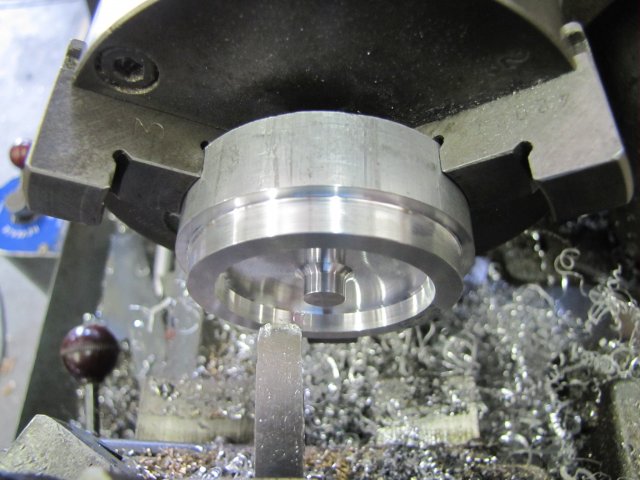Hi Barry, and welcome to HMEM!
This is the correct place to ask questions Thm:
Your machining steps sounds good; there are a couple of ways of doing it, but you definitely have a plan.
As to converting all the dimensions - this initially intimidated me a bit as well when I started out; now it does not even bother me any more...
So some tips that worked for me:
Get a small scientific calculator to keep in your shop; it's really handy all the time.
When converting plans, and if you want to stay true to the original imperial dimensions, store 25.4 to the calculator's memory. This makes it quick to do the conversions. Start with the fraction and divide it up. If it's more than 1" like 1 1/8", add the whole number of inches, and then multiply with memory recall - e.g. 1 1/8" : on the calculator do "1 divide by 8 equal plus 1 equal times RM equals". Round your values to 0.01mm; that is in 98% of cases close enough. Try and work from the plans so that you have a reference point for incremental values, and work with the total distance from the reference point; this minimizes the effect of cumulative errors. Once you've done two or three plans like this it gets a lot easier.
Having said that, it's the harder way of converting plans - though I've found great benefit in doing it that way, as it actually gave me a good feel for how big things are if referenced in imperial by other members.
Easier ways of converting plans - if you don't mind the scale changing a bit - is to use a factor of 24mm = 1" - this will leave your model ever so slightly smaller - or use 32mm = 1" - this will result in a bigger model. There is an advantage to these methods though; for example if a drawing states you need a 1/4" shaft and you use the 24mm=1", it actually ends up as a 6mm shaft; very common to find in metric areas. Simmilar for 1"=32mm; that will result in an 8mm shaft. A lot of rounding issues will "disappear" as well.
I use a combination of the true conversion and the "off-scaling"; I build my models to a true 1" = 25.4mm scale, but then go through the plans again, and convert shaft sizes (and corresponding holes in parts) and so on to the closest appropriate metric equivalent.
The biggest issue I've found with the conversions is fasteners; getting the best equivalent metric for the imperial sizes can be confusing at first. John Bogstandard uploaded a file
here that can help a lot with that.
Regards, Arnold





